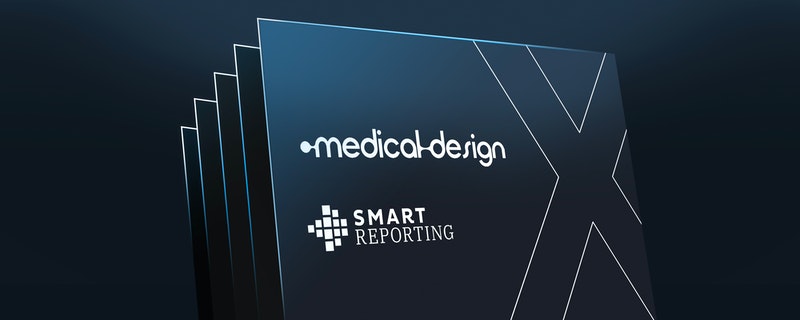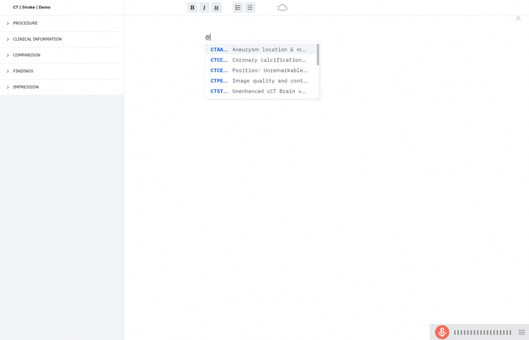1 min read
Smart Reporting to Acquire Fluency for Imaging: uniting to create Jacobian
Munich, Germany / Pittsburgh, USA – October 15, 2025.Smart Reporting, a pioneer in AI-powered diagnostic reporting, has entered into a definitive...

Digitization in diagnostic workflows makes these more efficient, cost-effective and safer
In addition to the Covid-19 pandemic, the medical and hospital sector is facing major challenges. Among them are three main challenges, which highlight the need for digitization. First, the workload of medical staff is continuously increasing. For example, the number of CT examinations in OECD countries increased by more than 50 percent between 2007 and 2017. Second, information overload is increasing relentlessly; in 2020, medical knowledge is expected to double every 73 days. Medical knowledge is thus growing much faster than medical personnel can absorb and process it. This means that the latest knowledge is not incorporated into clinical decision-making. And third, enormous amounts of data are generated in clinics and practices every day. As a rule, however, this data cannot be analyzed automatically, let alone be machine-readable. This is not the exception, but the rule. Estimates suggest that around 80 percent of clinical data is unstructured and therefore hardly usable for further analyses.
The last point in particular has a direct influence on the two points before. After all, the causal chain of data becoming information and information becoming knowledge applies, particularly to the medical field. However, especially in terms of data infrastructure, many clinics and practices have not kept pace with the progress being made in other areas of medicine. While technologies have advanced at breakneck speeds, many work-flows have barely changed in recent decades. For example, in nearly all clinical departments in highly developed industrialized nations, medical documentation - doctors' letters, medical findings, or surgery reports - is often recorded in the form of unstructured free-form texts that medical staff enters via dictation machines or the keyboard. These are neither machine-readable nor is usable for further processing.
In addition, in fields such as radiology or pathology, close interaction with an image processing system (for example, to display CT and MRI images) is required. This means that the physician examines the images and dictates or types in the observed findings at the same time - an error-prone system. This common practice in reporting results in three fundamental disadvantages for physicians and patients:
There is no question that future-proof reporting in clinical practice must make workflows more efficient. This should give the physician certainty in the diagnosis and at the same time set a new universal standard for data processing. Reporting represents one of the core building blocks of the healthcare system. It allows physicians to document and analyze clinical data, thus making it an important foundation for the advancement of personalized medicine.
SmartReports brings structure to medical documentation
Smart Reporting's reporting software replaces free-text findings with intelligent decision trees that enable radiologists, but also physicians from many other departments around the world, to arrive at a clearly structured report. With SmartReports, physicians save time, especially during routine diagnostic examinations. In addition, the physician is supported in clinical decision-making by the provision of a validated, indication-specific decision tree and context-related medical knowledge. The report generates structured data that is available for clinical analysis at the population level, for artificial intelligence (AI) training, and for entry into patient registries.

The software consists of three main components: The reporting infrastructure, the medical content, and the analytics.
The Reporting Infrastructure
The reporting infrastructure essentially consists of the elements "Decision Tree", "Text Editor", "Text-to-Structure" and "Auto-Text". The decision tree allows structured data input, which, for example, can be clicked on directly in a guided menu after the images have been viewed in detail. In a sense, the decision tree guides the physician through the diagnostic process. It has been created and validated by medical experts in compliance with the current guidelines. The physician can also use the text editor to enter flexible free text (for example, via dictation device or keyboard) to supplement the structured elements.
As a key feature, "text-to-structure" is an essential component of SmartReports. This allows free text, whether spoken or written, to be automatically assigned to elements of the decision tree. The speech processing algorithm is able to translate input into structured text modules in real-time based on the stored medical content in the templates.
In addition, the Auto-Text function allows predefined text paragraphs to be inserted via keyboard shortcuts. This means that, for example, in the case of standard findings or particularly frequent combinations of clinical findings - text paragraphs can be inserted with a single keystroke and the content is automatically mapped to the template. (see below)
Right from the start, great importance was attached to interoperability during development. The software can be seamlessly integrated into existing medical information systems (for example RIS / Radiology information system and PACS / Picture archiving and communication system).
The medical contents
The core element of the software is the medical content, the "library" that defines the content of the decision tree. The content was developed in collaboration with industry experts and medical societies, including, for example, the ESCR (European Society of Cardiovascular Radiology) and the ESOI (European Society of Oncologic Imaging). The content is seamlessly embedded and provided to the physician at the appropriate points in the reporting, for example, through so-called sketch elements and infoboxes (Figures 2 and 3).
Sketch elements are graphic elements for illustrating anatomical structures that support the physician in indicating the localization of a finding. This is a relief in that instead of describing the localization in your own words, the physician simply has to select the corresponding segment in the graphic.
The infoboxes, in turn, display relevant information at the appropriate points in the decision tree. This can be, for example, the medical classifications or example images for a selected clinical case.
The Analytics
With SmartReports, the results of external AI algorithms for image analysis are integrated into the reporting solution. Selected parameters from the automated image analysis can be transferred to SmartReports via an API (Application Programming Interface). After the physician has edited or added to the findings, the report data are evaluated and visualized at the population level, for example via interactive dashboards (Fig. 4). By annotating the decision trees with the help of terminologies and ontologies, the meaning of the findings data can be interpreted across systems (semantic interoperability).
Published by https://www.medical-design.news/ | May 17, 2021 in German language
Written by Su Hawn Kim | Smart Reporting
1 min read
Munich, Germany / Pittsburgh, USA – October 15, 2025.Smart Reporting, a pioneer in AI-powered diagnostic reporting, has entered into a definitive...
2 min read
Munich, Germany – May 12 , 2025 – Smart Reporting GmbH, a global leader in AI-powered diagnostic reporting, today announced a strategic partnership...
2 min read
Empowering Radiology with AI: Smart Reporting’s Context-Aware Approach to Automated Reporting
Bringing Intelligence into Structure – and Structure...